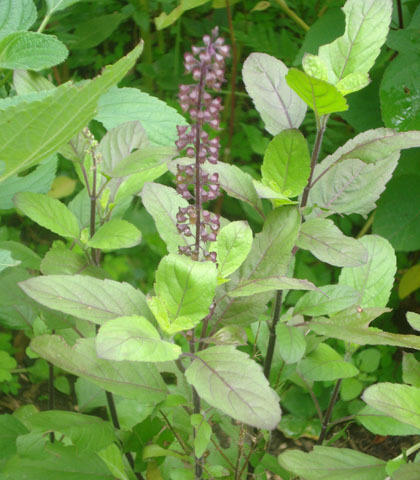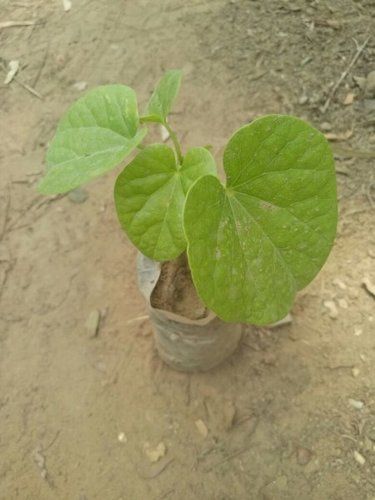Tulsi Plants

Tulsi Plants Price And Quantity
- 15-20000 Piece
- 2.00 - 6.00 INR/Plant
Tulsi Plants Trade Information
- 1000000 Piece Per Month
- 10 Days
- All India
Product Description
Tulsi or Sacred basil (Ocimum sanctum L.) supplied by us is a biennial shrub associated to the group of Lamiaceae. This kind of plant has been revered by the human being of India for its large number of usages since vedic times. Even today, it is preyed by many people. The essential oil extracted from it has around 71% eugenol and is similar to the clove oil. Eugenol is used worldwide in cosmetics, perfumery, confectionary and pharmaceuticals industries. The juice of its leaves possesses antiperiodic, stimulating, antiseptic, diaphoretic, anti-pyretic, expectorant, and memory improving properties. This is one amongst the few plants that purifies the environments.Soils : The plant is completely useful and it can be planted on any kind of soil except the ones with extremely saline, alkaline or water logged conditions. Thought, sandy loam soil with good natural content is considered perfect.
Climate : The crop has a large flexibility and can be developed perfectly in tropical and sub-tropical environmental conditions. Long days with elevated temp. have been found suitable for the growth of plant and oil production.
Varieties : At present, there are no nominated varieties under this type of crop and only the kinds:
- Green kind (Sri tulsi) and
- Purple kind (Krishna tulsi) are under farming.
Cultivation :
- Propagation : The crop can be grown either through cuttings or seeds.
- Nursery raising : For the propagation of basil with the use of seeds, those are to be planted in the beds of nursery. The nursery has to be located ideally in partial shade with proper irrigation facilities. Soil is performed upto a depth of around 30cm. Perfectly rotten land yard manure (2 kg per square meter) is used to the soil and prepared to a nicely tilth & seed beds of 4.5x1.0x0.2 meter size. Owing to minute size of seeds, the required amount of seeds are blended with sand in the proportion of 1:4 and sown in bed of nursery, 60 days in advance of the arrival of monsoon. They germinate in 8 to 12 days and seedlings are prepared for transplanting in about one & half months time at 4 to 5 leaf stage.
- Vegetative propagation : Vegetative it can be propagated / grown by terminal harvesting with about 90 to 100% success throughout October to December months. For this objective, cuttings with 8 to 10 nodes and 10 to 15 cm length are utilized. They are so prepared that except for the first 2 to 3 pairs of leaves the remaining are trimmed off. After this, they are sown in the perfectly prepared polythene bags or nursery beds. In nearly 4 to 6 weeks time the rooting is done and they are ready to transplant into the main land. The plants are replanted at difference of 40 cm between the row & 40 cm within the row.
Irrigation & Interculture :
- After transplanting irrigation or watering is given two time in a week till 30 days in order to establish themselves perfectly. Subsequently, it is provided at weekly difference depends on the rainfall as well as soil moisture status.
- The first unwanted grass is complete in 30 days after sowing and the second after another one month. Later on, no extra unwanted grass is needed because the plants get bushy and cover the soil and thus smother the unwanted grass. However, after every harvesting process, unwanted grass has to be done in order to avoid unwanted grass growth in the inter-spaces, if any.
Plant Protection :
- Major insects : Leaf rollers
- Major diseases : Seedling blight, powdery mildew, and root-rot
Schedule :
- Spray the crop with 0.1% methyl parathion or 0.2% malathion to control leaf rollers never found.
- Spray the crop with 0.3% wettable sulphur in order to control powdery mildew.
- Drench the beds of nursery with a 0.1% solution of mercurial fungicide.
- Adopt phytosanitary measures for controlling the seedling blight & root rot.
Harvesting & Yield :
- The crop is harvested at absolute blossom level by cutting the plants at 15cm from base level for ensuring good redevelopment for further harvests. The first cutting is done after 3 months of sowing and thereafter it could be harvested at every 75 days break. Cut the crop on bright sunny days so as to obtain good production and oil quality.
- On an average, basil provides around 10,000 to 15,000 kilograms of fresh herbage / hectare yearly. As the herb has about 0.1 to 0.23% oil, commensurating to it we may get about 10 to 23ltr of essential oil / hectare.
Material Available for Tulsi Plants
- Tulsi Leaves
- Tulsi Seeds
- Tulsi Extracts
- Tulsi Panchagh
Inputs:
| Materials | -- | Per acre | Per hectare |
| Seeds (g) | -- | 120 | 300 |
| Farm Yard Manure (t) | -- | 6 | 15 |
| Fertilizers (kg) | N | 48 | 120 |
Note : FYM along with 1/2 of nitrogen & the whole of potassium and phosphorus is given as a basal dose, and the rest nitrogen is used in 2 splits after 1st and 2nd cuttings.





